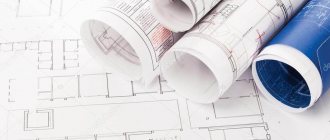Why is it important to ventilate?
The inhaled mixture has a direct effect on the heart, brain and other internal organs. Fresh air in the apartment prevents the further proliferation of germs and allergens. Among them, the following are particularly dangerous:
- Mold.
- Ticks.
- Dust.
- Other harmful substances.
To have a positive impact, you will need to learn how to properly ventilate your apartment. Additionally, you will need to organize preventive cleaning of the hood and ventilation pipes. Thanks to this, it will be possible to eliminate more than 20% of harmful components. Against the backdrop of their negative impact, apartment residents may experience migraines or periodic occurrence of other pain.
Scientists have been able to establish that a child falls asleep 2-3 times faster after ventilation.
At the same time, the carbon dioxide content in the environment is noticeably reduced. Lack of oxygen leads to exhaustion of internal organs, so they begin to work at the limit of their capabilities, causing a loss of strength and a feeling of nausea.
Ammonia, methane and aldehydes can cause many diseases of the respiratory system. Ventilation has a positive effect on the indoor microclimate:
- Necessary air movement within the space.
- Elimination of unpleasant odors.
- Renewal and supply of new oxygen.
- Eliminate carbon dioxide.
- Minimizing the likelihood of the formation of harmful microorganisms: mold and mildew on the walls.
Natural ventilation
Natural ventilation does not include environmental changes such as humidity, temperature, and pressure. It involves spontaneous air exchange due to different temperatures inside and outside the room.
Natural ventilation occurs in different ways:
- Through the pores of the building itself, that is, through the material of its walls.
- Through the holes that exist in the structures of the building itself.
- Through transoms or windows.
- Through cracks in door frames and window structures.
We recommend: SanPiN 2790 10 on medical waste: basic provisions
The air flow through the walls will depend on the materials they are made from. Walls made of pine wood and brick are considered breathable. But it is worth considering that the permeability of any material is reduced if the inside of the room is decorated with wallpaper or paint .
The air flows that enter through window openings and door gaps are insignificant. Therefore, for natural ventilation, the main source of air is vents, as well as transoms.
Air flow and movement depend on factors such as wind strength and temperature differences between indoors and outdoors. It is clear that the stronger the wind, the better the ventilation. If the street is calm and the temperature difference is minimal, then air exchange will occur only due to the diffusion process .
It is proportional to the area of all the vents and the time spent on ventilation. According to the rules, for a normal microclimate in educational institutions, vents must make up at least 2% of the total floor area. According to statistics, this area of the windows is equal to one square meter and should open no less than 45 degrees.
Sometimes transoms are preferred to vents. Transoms are blind or opening parts of windows. They serve for smooth ventilation and have their own advantages:
- Higher thermal insulation, which maintains the thermal index in the room longer.
- There is no need to close it when children are present in the classroom.
- In cold weather (autumn and winter), classrooms should be ventilated only in the absence of children.
One child at school consumes at least 4 cubic meters of air - in the case when ventilation is carried out according to instructions.
Ventilation in kindergarten
For the proper growth and development of a child, it is necessary to create optimal conditions for his stay in the preschool. One of the mandatory requirements is the rules of ventilation in a preschool institution. Otherwise, the risk of spreading viral diseases or their escalation into an epidemic increases. The procedure is regulated by a set of state norms and rules - SanPiN2.4.1.3049-13.
The duration of ventilation depends on the specifics and volume of the room, as well as the ambient temperature:
- Junior groups - the procedure is carried out for a total of up to 3 hours a day, with a frequency of 1.5-2 hours and must be completed half an hour before the children arrive in the appropriate room. Executed according to the approved schedule (example below).
- In unfavorable weather, ventilation is not performed.
- In the warm season, the period of procedures may be extended.
When carrying out sanitary ventilation in a kindergarten, it is important to pay attention to the following points:
- Characteristics of premises and arrangement of the ventilation system. For example, through toilet rooms the greatest volume of polluted air is removed when the windows are open. Ventilation ducts for toilets and dryers should not be combined into a common system with ducts from bedrooms and playrooms and at the same time must be in good technical condition.
- Maintaining optimal temperature. Warm air from the street in summer cannot harm you, but you should be wary of the cold. Drafts can trigger the development of colds.
- Weather and other external factors.
To carry out the ventilation procedure, a sanitary schedule (table) is drawn up together with a medical worker and approved by the head of the kindergarten. An example of such a schedule is below:
Ventilation schedule in kindergartens
Artificial ventilation
School classrooms are equipped with artificial ventilation systems.
With its help you can change the air humidity and temperature in the room. True, such mechanical systems are used extremely rarely in organizations. We recommend: Sample of filling out form 2-TP waste
To create the necessary microclimate, supply systems are used in the ventilation project. In them, the air flow is carried out through the grille, with its help the air duct is protected from precipitation. Then the air is cleaned of debris and dust through a filter and enters the classrooms.
The heater and fan are integral parts of this system. With their help, you can increase or decrease the air temperature. Exhaust ventilation removes CO2 from the air.
Both supply and exhaust ventilation systems reduce the need for constant ventilation because they provide auxiliary air flow.
Frequency and duration of ventilation at school
SanPin 2.4.2.2821-10 establishes norms and rules that make it possible to create comfortable conditions for children to spend time at school. It indicates the time required for a sufficient amount of oxygen to enter the room:
- Even in the cold season, the classroom must be ventilated for at least 20 minutes before starting classes.
- Subsequently, every hour the windows should be opened for at least five minutes (during recess, for example).
It should be noted that the class teacher or duty officer must come to the school in advance and perform the necessary manipulations before the start of classes. A standard lesson lasts no more than 45 minutes, and during breaks, all students are advised to leave the classroom and open the windows for ventilation.
The rules also note that manipulations can be carried out in a room from which all children have previously left. Otherwise, the risk of developing colds increases.
At school, after the end of the first shift, it is necessary to ventilate the premises for 20 to 35 minutes. The period can be extended if the air is excessively saturated with carbon dioxide, which directly depends on the number of students in the class.
Representatives of the educational institution must correctly draw up a schedule of classes. In this case, it will be possible to organize additional events on which the comfort in the premises depends. The rules for ventilating an office in a school according to SanPin regulate the following frequency:
Often, the duration of ventilation depends on the length of the break between lessons. In this regard, it is recommended to add extended breaks to the schedule every 3-4 academic hours.
Legislative framework in schools according to Sanpin.
The mode of ventilation of classrooms in schools according to SanPiN is legally prescribed in the appendix (SanPiN 2.4.2.2821-10), adopted on 09/01/2011 and edited on 12/25/2013.
According to it, any educational institution must rely on accepted sanitary and hygienic rules.
Chapter VI indicates what standards are required for each class and office in the school.
The main ones are:
- pp. 6.6 – classrooms are ventilated during breaks. Through ventilation is carried out before the start of lessons and after their completion. It is permissible to ventilate recreational ones during the lesson. The time is determined depending on the climate, weather and heating system operation.
Cross-ventilation of classrooms.
Table No. 1. Through ventilation according to SanPin
- pp. 6.7 – physical education lessons are conducted in specially equipped rooms with good air volume and aeration.
- When the outside air temperature is above + 5 C, it is allowed to open windows on the leeward side.
- The wind speed should not be higher than 2 m/s. If the wind is stronger and the temperature is lower, open 1-3 transoms.
- Through ventilation is allowed only for 1-1.5 minutes if it is 10 C outside and the wind is blowing at a speed of more than 7 m/s.
- During recess and in the absence of students - 5-10 minutes.
Important! When ventilating, the indoor air temperature must not be allowed to drop below + 14 C.
- Clause 6.8 – windows in classrooms and offices must have vents. As an option - folding transoms, which should function at any time of the year.
- pp. 6.9 – the glazing area is maintained or increased if the window unit is changed.
- pp. 6.11 – the school must have its own ventilation systems in the following rooms: assembly hall, classrooms, dining room, swimming pool, first-aid post, bathrooms and in rooms where cleaning equipment is stored.
- If the school has carpentry, plumbing workshops or offices in which stoves are installed, mechanical exhaust ventilation will be equipped for them.
- pp. 6.12 – at school the concentration of harmful substances should not be higher than the hygiene standards established in the locality.
Download Sanpin for school 2020-2021.
Loading…
Taking too long?
Reload document
| Open in new tab
Types of ventilation
The ventilation system is selected depending on the time of year. The duration and quality of air exchange directly depends on this parameter. SanPiN mentions two types for ventilation:
- Through. In this case, all available windows are opened and thereby ensure maximum circulation of air masses in a short period of time.
- Corner (one-sided). This type is used mainly in the warm season.
- Through the ventilation system shaft. This is the most common type of continuous air exchange, which increases when windows or air supply units are opened.
Ventilation devices
Ventilation can also be achieved using special devices. They are divided into groups depending on the direction of air movement inside. In practice, the following classification is most often used:
- Inlet.
- Exhaust.
The installation specification directly depends on the type chosen. Additionally, system requirements and characteristics should be taken into account. For example, a ventilation valve is installed directly into the wall itself. That is why the layout of the building and diversion routes is of key importance here.
Wall ventilators help eliminate unpleasant odors in office premises. They are also installed in the kitchen, toilet or bathroom. If necessary, the flow of fresh air can be organized in rooms of another type.
Ventilators for PVC windows
Window ventilators also help organize the necessary circulation of air masses. The most common installation method is a hole in a window opening or a special grille in plastic windows. In practice, another classification of all devices used is also used:
- Depending on the specification of the method of air penetration into the room: mechanical or natural.
- The service space plays an important role: local or general purpose.
Modern supply and exhaust systems help organize the flow of fresh air at any time of the year through the use of purifiers and filters. At the same time, they do not have a negative impact on the temperature in the room, since they use recuperators. Their choice is also preferred by institutions.
Temperature, humidity, ventilation mode at school
Requirements for air-thermal conditions
6.1. Buildings of educational institutions are equipped with centralized heating and ventilation systems, which must comply with the standards for the design and construction of residential and public buildings and ensure optimal parameters of the microclimate and air environment.
Steam heating is not used in institutions. When installing heating device enclosures, the materials used must be harmless to the health of children.
Fences made of particle boards and other polymer materials are not allowed.
The use of portable heating devices, as well as heaters with infrared radiation, is not allowed.
6.2. The air temperature, depending on the climatic conditions in classrooms and offices, psychologist and speech therapist offices, laboratories, assembly hall, dining room, recreation, library, lobby, wardrobe should be 18 - 24 C; in the gym and rooms for sectional classes, workshops - 17 - 20 C; bedroom, playrooms, premises of preschool education departments and school boarding schools - 20 - 24 C; medical offices, changing rooms of the gym - 20 - 22 C, showers - 25 C.
To control the temperature regime, classrooms and classrooms must be equipped with household thermometers.
6.3. During non-school hours, in the absence of children, the temperature in the premises of a general education institution must be maintained at least 15 C.
6.4. In the premises of educational institutions, the relative air humidity should be 40 - 60%, the air speed should not exceed 0.1 m/sec.
6.5. If there is stove heating in existing buildings of educational institutions, the firebox is installed in the corridor. To avoid indoor air pollution with carbon monoxide, chimneys are closed no earlier than complete combustion of the fuel and no later than two hours before the arrival of students.
For newly constructed and reconstructed buildings of educational institutions, stove heating is not allowed.
6.6. Educational rooms are ventilated during breaks, and recreational rooms are ventilated during lessons. Before classes start and after they end, it is necessary to carry out cross-ventilation of classrooms. The duration of through ventilation is determined by weather conditions, wind direction and speed, and the efficiency of the heating system. The recommended duration of through ventilation is given in Table 2.
Recommended duration of cross- ventilation of classrooms depending on the outside air temperature
| Outside temperature С0 | Duration of room ventilation (min) | |
| In small changes | During big breaks and between shifts | |
| From + 10 to +6 | 4-10 | 25-35 |
| From +5 to 0 | 3-7 | 20-30 |
| From 0 to -5 | 2-5 | 15-25 |
| -5 to -10 | 1-3 | 10-15 |
| Below - 10 | 1-1,5 | 5-10 |
6.7. Physical education lessons and sports sections should be conducted in well-aerated gyms.
During classes in the hall, it is necessary to open one or two windows on the leeward side when the outside air temperature is above plus 5 C and the wind speed is no more than 2 m/s. At lower temperatures and higher air speeds, classes in the hall are conducted with one to three transoms open. When the outside air temperature is below minus 10 C and the air speed is more than 7 m/s, through ventilation of the hall is carried out in the absence of students for 1 - 1.5 minutes; during big breaks and between shifts - 5 - 10 minutes.
When the air temperature reaches plus 14 C, ventilation in the gym should be stopped.
6.8. Windows must be equipped with folding transoms with lever devices or vents. The area of transoms and vents used for ventilation in classrooms must be at least 1/50 of the floor area. Transoms and vents must function at any time of the year.
6.9. When replacing window units, the glazing area must be maintained or increased.
The opening plane of the windows should provide ventilation.
6.10. Window glazing must be made of solid glass. Broken glass must be replaced immediately.
6.11. Separate exhaust ventilation systems should be provided for the following premises: classrooms and offices, assembly halls, swimming pools, shooting ranges, canteen, medical center, cinema room, sanitary facilities, premises for processing and storing cleaning equipment, carpentry and metalwork shops.
Mechanical exhaust ventilation is installed in workshops and service rooms where stoves are installed.
6.12. Concentrations of harmful substances in the air of premises of educational institutions should not exceed hygienic standards for atmospheric air in populated areas.
Source: www.rg.ru
Fresh air in other rooms
It is important for every person to know the dangers of stale air. It impairs performance and increases fatigue. There are requirements for the aeroionic composition of the environment. Clean and fresh air should be sufficient not only in residential areas. You should also pay attention to its quantity in the following rooms:
- Hermetically sealed spaces within which an artificial habitat has been created.
- Air parameters require forced ventilation if synthetic material was used for repair work. It has the ability to accumulate electrostatics in its structure.
- It is important to maintain a balance of humidity and temperature in workshops, especially those where a large amount of electrical equipment is operated. Some types of office equipment (for example, a laminator) consume oxygen and, when actively used, do not allow people to work comfortably.
- Premises in which air ionizers and other special devices are actively used. As a result of the ionization process, oxygen is saturated with ions and this process must be accompanied by an influx of fresh air.
- Enclosed spaces within which welding work is performed. The process produces a large amount of elements harmful to the human body, such as nitrogen oxides, carbon monoxide and others. With insufficient outflow of harmful gases over the years, welders develop occupational respiratory diseases.
We should not forget that large amounts of carbon dioxide can cause irreparable harm to the human body. A loyal employer must worry about its staff and adhere to a number of mandatory rules.
A visual graph of the reduction in carbon dioxide levels during ventilation
Standards for office premises require the presence of a well-thought-out ventilation or air conditioning system. Additional cleaning should be performed as air masses pass through the air duct. Thanks to this, it is possible to prevent the development of serious diseases and maintain freshness for a long period of time. In hospitals, room ventilation is combined with additional quartz treatment. The ultraviolet light produced by quartz not only disinfects the airspace, but also has a positive effect on health by killing harmful bacteria and microbes.
It is necessary to control the cleanliness of the air in order to create a healthy atmosphere. It should be both at home and in the office, because it is in these rooms that a person spends the most time of his life. The fight must be waged in several directions at once:
- Elimination of unpleasant odors that may be formed due to the negative effects of chemical components or bacterial growth. To eliminate them, the ozonation method is used. There are special devices that perform the procedure automatically. It helps kill harmful viruses, bacteria and fungi.
- Dust tends to accumulate. A device equipped with a HEPA filter quickly helps get rid of it. Often such devices are additionally equipped with electrostatic barriers and use the effect of air washing by passing it through water.
- During the cold season, the indoor air will need to be humidified regularly. During the hot season, the procedure helps eliminate the negative effects of air conditioning. Household air humidifiers are suitable for home use.
- The air contains positively and negatively charged particles. They also have a direct effect on the feeling of freshness. To maintain this indicator at the optimal level, it is recommended to use a bipolar ionizer.
The atmosphere in your home or office may be affected by the smell of cigarettes or spoiled food. They tend to accumulate in furniture upholstery or wallpaper. To prevent this from happening, follow simple ventilation rules. In the cold season, air exchange can be organized using forced ventilation devices. With a systematic lack of ventilation in an adult and especially a child, the risk of developing allergies increases.









